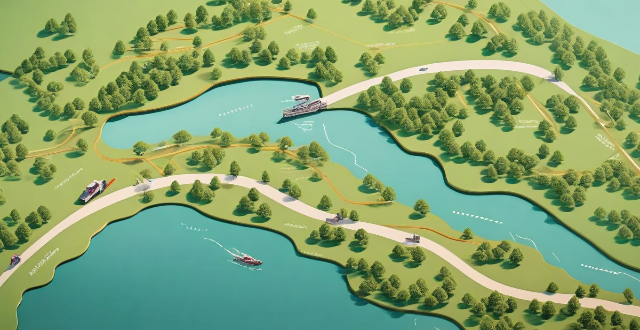Planning a cross-country cycling route involves determining the starting and ending points, choosing a suitable route, planning daily mileage, booking accommodations/campsites, and packing necessary gear. Factors to consider include distance, terrain, weather conditions, safety concerns, travel restrictions, fitness level, budget, and preferences. Tools like Google Maps, Bikely, or Komoot can help customize the route based on distance, elevation gain, and surface type. Aim for 50-70 miles per day if experienced or 30-40 miles if new to long-distance cycling. Pack spare tubes, pump, multi-tool, first aid kit, food, water, and appropriate clothing for expected weather conditions.

How to Plan a Cross-Country Cycling Route
Planning a cross-country cycling route can be an exciting and challenging task. Here are some steps to help you plan your route effectively:
Step 1: Determine Your Starting Point and Destination
First, decide where you want to start and end your journey. Consider factors such as the distance between the two points, the terrain, and the weather conditions. It's also important to research any potential safety concerns or travel restrictions in the areas you plan to visit.
Step 2: Choose Your Route
Once you have determined your starting point and destination, it's time to choose your route. There are several options for finding a suitable route, including using online mapping tools like Google Maps or dedicated cycle route planners like Bikely or Komoot. These tools allow you to customize your route based on factors such as distance, elevation gain, and surface type.
Step 3: Plan Your Daily Mileage
Next, calculate how many miles you want to ride each day. This will depend on your fitness level, the terrain you'll be riding on, and how much time you have available for your trip. A good rule of thumb is to aim for around 50-70 miles per day if you're an experienced cyclist, or 30-40 miles per day if you're new to long-distance cycling.
Step 4: Book Accommodations and Campsites
Once you have planned your daily mileage, book accommodations or campsites along your route. Make sure to research each location carefully and consider factors such as availability, cost, and proximity to your planned route. You may also want to look into local bike shops or repair services in case you need any maintenance or repairs during your trip.
Step 5: Pack Your Gear
Finally, pack all the necessary gear for your trip. This includes items such as spare tubes, a pump, a multi-tool, a first aid kit, and enough food and water for each day's ride. You should also bring appropriate clothing for the weather conditions you expect to encounter along your route.
By following these steps, you can plan a safe and enjoyable cross-country cycling route that takes into account your fitness level, budget, and preferences. Happy cycling!